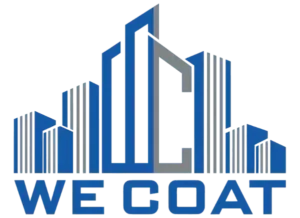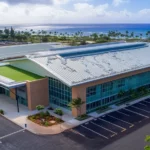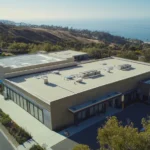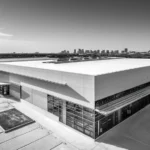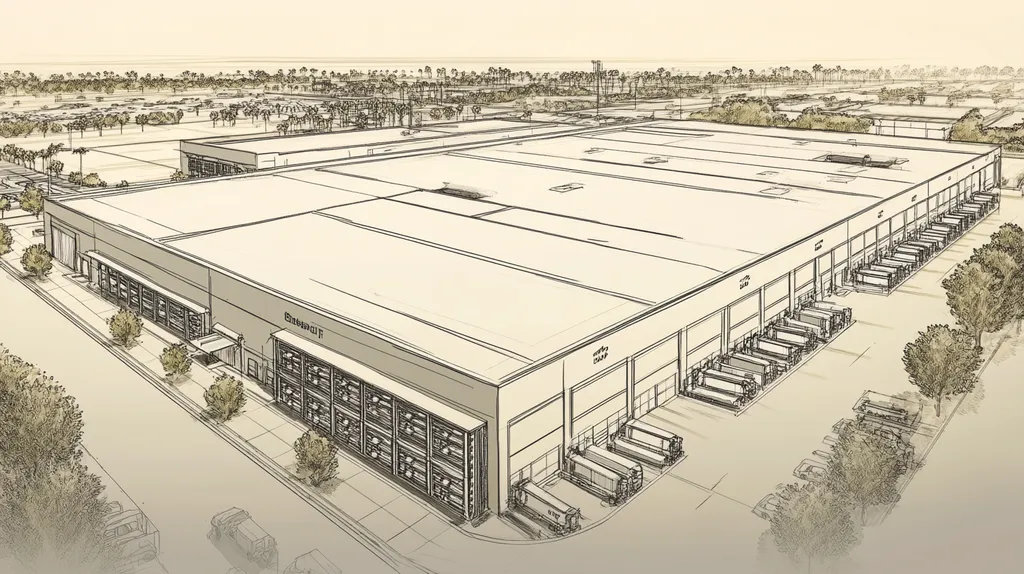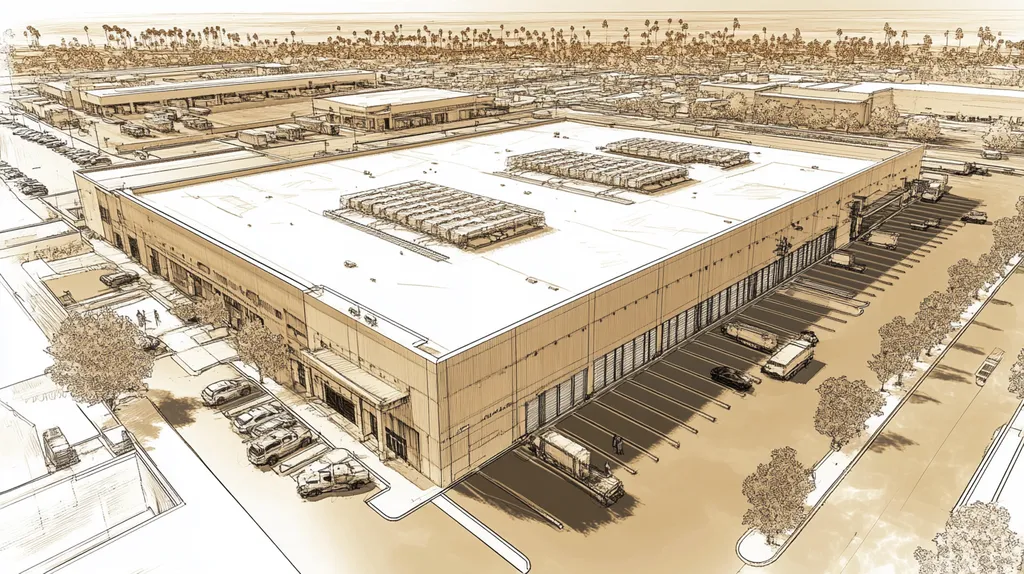In today’s corporate landscape, over 70% of businesses are scrambling to meet ambitious sustainability targets – and their roofs might just hold the key to success.
From soaring energy costs to mounting environmental regulations, commercial property owners face unprecedented pressure to optimize their buildings’ environmental performance.
Enter roof coatings: the unsung heroes of sustainable architecture that can slash energy consumption by up to 30% while extending roof life by decades.
This comprehensive guide explores how strategic coating choices can transform ordinary roofs into powerful assets for meeting corporate sustainability goals, examining everything from fundamental concepts to optimization strategies.
SECTION 1: FUNDAMENTAL CONCEPTS
As the demand for sustainable practices in commercial roofing intensifies, understanding the importance of coatings in meeting corporate sustainability goals is crucial. In 2022, commercial buildings were responsible for over 40% of global energy consumption. This startling statistic highlights the need for efficient roofing solutions that not only address climate change but also adhere to increasing regulations. This section will define sustainable roofing, examine the environmental impacts of various roofing materials, and showcase how roof coatings can significantly enhance energy efficiency.
Definition of Sustainable Roofing
Sustainable roofing encompasses systems specifically designed to minimize environmental effects while maximizing efficiency and functionality. These systems utilize eco-friendly materials, often enhancing the lifespan of the roof itself.
Furthermore, sustainable roofing practices encourage routine maintenance and innovations that boost a building’s performance. Options like green roofs, solar reflectivity, and high-performance coatings are all part of this approach.
By committing to sustainable measures, property owners ensure compliance with regulations while enjoying financial perks through reduced energy expenses.
In essence, sustainable roofing represents a comprehensive strategy that ensures roofs provide positive contributions to both the environment and the corporate bottom line.
Environmental Impact of Roofing Materials
The selection of roofing materials can greatly influence a building’s carbon footprint. Traditional materials, such as asphalt shingles and certain metals, often have negative environmental impacts due to their production and disposal processes.
In contrast, sustainable alternatives like recycled metal and modified bitumen typically require less energy to produce and can be recycled at the end of their lifecycle. Embracing these materials is essential as buildings face increasingly stringent environmental regulations.
Additionally, certain roofing materials can create a “heat island” effect, elevating urban temperatures and escalating energy consumption for cooling. Utilizing reflective roofing materials can help alleviate these issues.
By prioritizing environmentally friendly materials, property owners can substantially decrease negative environmental outcomes while bolstering the sustainability profile of their buildings.
Energy Efficiency and Roof Coatings
Energy efficiency is a vital consideration in contemporary roofing, significantly impacting both costs and environmental outcomes. Roof coatings are instrumental in enhancing thermal performance and prolonging roofing system longevity.
These coatings often reflect sunlight, thereby decreasing heat absorption and cutting down on energy costs related to cooling. Research indicates that reflective roof coatings can lower energy consumption by up to 20% during peak summer months.
Moreover, many roof coatings are formulated with low-VOC (volatile organic compounds), further improving indoor air quality and supporting sustainability objectives.
Implementing energy-efficient coatings not only assists in achieving sustainability targets but can also yield substantial returns on investment through reduced energy bills and a longer roof lifespan.
SECTION 2: SYSTEM COMPONENTS
As the push for sustainability gains momentum in the corporate world, selecting the right roofing coatings is more important than ever. Poorly chosen coatings can lead to skyrocketing energy expenses, heightened environmental footprints, and reduced roof life. In fact, research shows that nearly 30% of commercial roofs stand to benefit greatly from the right coatings. Knowing the different types of roof coatings available, their compatible substrates, and eco-friendly options is vital for achieving corporate sustainability goals.
Types of Roof Coatings (Acrylic, Silicone, Polyurethane)
Diving into the world of roof coatings reveals a range of options, each with unique perks. Acrylic coatings are a popular choice thanks to their impressive UV resistance and reflectivity, helping to keep energy expenses in check. On the flip side, silicone coatings shine in their waterproofing prowess, making them perfect for flat roofs, especially in rainy climates.
Polyurethane coatings, known for their toughness, stand out in high-traffic areas and endure severe weather conditions, which makes them an excellent fit for industrial environments. Understanding the particular attributes of each coating type empowers property owners to make choices tailored to their roofing needs.
Additionally, considering how each coating impacts maintenance and lifespan is essential for long-term sustainability. It’s not just about quick fixes; every coating should be assessed for its potential to contribute to a sustainable future.
Ultimately, selecting the right coating demands a collaborative approach between the coating type and the overall roofing system while taking environmental factors into account. Property owners can’t afford to overlook the importance of choosing coatings that align with their sustainability objectives.
Compatible Roofing Substrates and Surfaces
Compatibility can make or break a roofing project. Common substrates include metal, single-ply membranes, and built-up roofs, each presenting distinct characteristics that influence which coatings will work best.
Acrylic coatings are the versatile champions in this regard, bonding well with a variety of surfaces. In contrast, silicone coatings excel on sloped roofs where water can drain away swiftly. Polyurethane coatings prefer sturdier substrates like concrete or metal for optimal performance.
Proper surface preparation is an often-overlooked but crucial step for ensuring coatings stick properly. For lasting outcomes, surfaces should be clean, dry, and free of any debris. Skipping this step risks premature coating failure, endangering sustainability efforts and driving up future costs.
By understanding how different coatings interact with diverse substrates, facility managers can craft effective, enduring roofing systems. This proactive approach not only minimizes maintenance but also plays a crucial role in meeting sustainability goals.
Eco-Friendly Coating Materials and VOC Considerations
Embracing eco-friendly coatings is vital in a market increasingly driven by environmental awareness. Traditional coatings often contain high levels of volatile organic compounds (VOCs), which can harm both air quality and the environment. Opting for low-VOC or VOC-free alternatives allows property owners to cut down their ecological footprint and create healthier indoor environments.
Fortunately, many eco-friendly coatings don’t compromise on performance. Low-VOC acrylic and silicone options are available that match the durability and energy efficiency of their conventional counterparts.
When selecting coatings, it’s wise to check for certifications from recognized environmental standards. Labels like Green Seal or Energy Star guide property owners towards products that meet their sustainability goals.
Ultimately, integrating eco-friendly coating materials into roofing strategies contributes to a well-rounded approach to sustainability. This not only helps meet regulatory requirements but also improves a company’s reputation with environmentally conscious customers and stakeholders.
SECTION 3: IMPLEMENTATION METHODS
In the race toward sustainability, the right roofing coatings can be game changers for corporations. Not only can they boost energy efficiency and cut down on heat absorption, but they can also add years to the life of existing roofs. By adopting effective application methods, property owners can turn their roofs from mere overheads into powerful eco-friendly assets. This section delves into application techniques for existing roofs, how to integrate coatings with other roofing systems, and critical strategies for addressing urban heat islands.
Application Procedures for Existing Roofs
Coating existing roofs isn’t just a slapdash job; it requires a thoughtful strategy to ensure every inch is protected. Start with a comprehensive roof assessment to locate leaks, signs of wear, and any debris build-up. This groundwork is vital because a clean surface is essential for a successful coating.
Once the roof is prepped, it’s time to cleanse the surface thoroughly—think pressure washing or scrubbing away any remnants of old coatings and contaminants. After achieving a pristine surface, applying a primer can work wonders by enhancing the adhesion of the final coating.
After the primer has set, the actual coating can be deployed, commonly using spray or roller methods to ensure the entire surface is uniformly covered. Pay close attention to seams and edges—these are often the Achilles’ heel of roofing systems. Double up on coating in these areas for maximum protection!
Post-application inspections are just as critical; they help catch any areas in need of touch-ups or additional sealing. This proactive stance optimizes the benefits of the new coatings and safeguards the investment.
Integration with Other Roofing Systems
Integrating coatings with current roofing systems isn’t just desirable—it’s essential for maximizing performance and sustainability. When selecting coatings, compatibility is key. For example, silicone coatings beautifully complement modified bitumen roofs, while acrylic coatings shine on single-ply membranes.
Choosing the right combination can create a solid, seamless surface that significantly reduces the chance of leaks. This not only enhances energy efficiency but also plays a crucial role in cutting down on your carbon footprint.
Moreover, the right coatings can extend the lifespan of the roof. Roofs coated appropriately usually experience fewer issues, resulting in less frequent repairs or replacements. This is a savvy strategy for both sustainability objectives and long-term cost management.
Special Considerations for Urban Heat Island Mitigation
The urban heat island (UHI) effect is a pesky phenomenon that elevates temperatures in city landscapes, leading to increased energy demand. Fortunately, coatings can be heroic here! Opting for reflective coatings can greatly lower roof surface temperatures.
These reflective surfaces not only cool roofs but can also bring down surrounding air temperatures, helping reduce air conditioning needs. This benefit ripples beyond individual buildings, contributing to the cooling of entire urban areas.
It’s also wise to take local climate and regulations into account when picking coatings for UHI mitigation. Building codes often encourage or even mandate the use of reflective materials, aligning your choice with both compliance and sustainability goals. Making informed decisions in this area can significantly enhance your organization’s environmental impact.
SECTION 4: MAINTENANCE REQUIREMENTS
Letting roof coatings fall into disrepair can cost property owners more than they might expect, leading to long-term issues and sustainability setbacks. Research has shown that a proactive maintenance plan is not just beneficial—it can extend the life of roofing systems by up to 50%. Staying ahead with regular maintenance is critical for ensuring roofs contribute effectively to corporate sustainability goals while promoting energy efficiency.
Regular Inspection and Assessment
Regular inspections form the foundation of a robust maintenance strategy for roof coatings. This vital checkup should occur at least twice a year, with extra attention after severe weather events. Identifying and addressing issues early on prevents small headaches from ballooning into expensive repairs.
Facility managers can enhance their inspection efforts by combining visual checks with advanced tools like infrared thermography. This technology uncovers hidden moisture and thermal defects that might escape the naked eye. It’s wise to document these findings for effective planning and prioritization of maintenance.
Bringing in a qualified roofing professional can also elevate the assessment process. Their specialized knowledge helps ensure accurate evaluations that take into account specific coating types and manufacturer guidelines. Regular assessments foster a proactive maintenance culture, aligning with overall sustainability goals.
Lastly, establishing a documented inspection schedule helps track roof conditions over time. This record serves as crucial data for making future repair or re-coating decisions, ultimately supporting the organization’s sustainability efforts.
Repair and Re-Coating Techniques
Addressing repairs and re-coating in a timely manner is essential to preserving roof system integrity. Quick action on worn or damaged sections minimizes the risk of leaks and insulation loss. Facility managers should ensure that all repairs use materials compatible with existing coatings to avoid mismatches that could lead to failures.
When the existing coating begins to underperform, re-coating becomes necessary. This process not only restores functionality but also adds layers of reflectivity, boosting energy efficiency levels. Consulting experts on the appropriate re-coating system tailored to specific facility needs is a wise approach.
Addressing vulnerabilities such as seams and penetrations during repairs is equally important. Properly applied sealants can bolster the roof’s durability, extending its lifespan. Investing in quality repair work significantly impacts sustainability goals by reducing the need for complete roof replacements.
Additionally, a comprehensive re-coating strategy can help achieve compliance with green building standards, enhancing corporate reputation. By leveraging innovative repair technologies, organizations can substantially improve their environmental footprint.
Preventative Maintenance Strategies
Implementing effective preventative maintenance strategies is crucial for maximizing the lifespan of roof coatings. Regular cleaning to remove debris and contaminants is a simple yet powerful way to maintain the performance of coatings. A clean roof enhances energy efficiency while boosting overall aesthetics.
Integrating a comprehensive maintenance checklist streamlines preventative efforts. This checklist should encompass scheduled inspections, cleaning, and repairs based on the unique characteristics of each coating system. Keeping detailed documentation ensures that all maintenance actions are recorded for easy review.
Training facility staff to recognize early signs of wear can drastically cut future repair costs. A knowledgeable team, backed by clear maintenance protocols, enhances both sustainability and operational efficiency. Regular training equips the team to quickly respond to emerging issues.
Finally, establishing a maintenance budget can ease financial planning and prevent unexpected costs. Allocating funds annually for routine checks and minor repairs guarantees that larger problems never take root. Commitment to a proactive maintenance program leads to better performance, longevity, and sustainability outcomes.
SECTION 5: PERFORMANCE METRICS
For property owners and facility managers, it’s not just beneficial but essential to measure the effectiveness of roofing coatings. With energy costs steadily climbing and environmental responsibility becoming a priority, understanding performance metrics can profoundly influence a company’s financial health and sustainability initiatives. Critical areas such as energy consumption reduction, waste management, and health benefits are where judicious coating choices can enhance overall performance. Let’s dive into these vital metrics.
Energy Consumption Reduction Metrics
Energy efficiency is a cornerstone of modern sustainability efforts. Coating treatments can significantly boost a building’s thermal performance, reducing the need for excessive heating and cooling. For example, reflective coatings can reduce surface temperatures by up to 30% on hot days, leading to a remarkable drop in air conditioning costs.
Performance can be quantified through energy consumption audits and careful analysis of utility bills. By examining these metrics, facility managers can project potential savings over time, presenting a strong case for investing in high-performance coatings. Research from the U.S. Department of Energy shows that companies adopting reflective roofing systems can achieve energy savings between 20% and 30% annually.
Moreover, employing energy-efficient roofing solutions enhances Corporate Social Responsibility (CSR) initiatives, signaling a commitment to reducing energy consumption. This commitment aligns with contemporary corporate values and helps attract environmentally conscious tenants.
Regular evaluations of energy metrics are crucial to ensure the selected coating consistently delivers benefits, contributing positively to both operational costs and sustainability profiles.
Waste Reduction and Lifecycle Analysis
The waste generated during roof replacement can be substantial and damaging to the environment. Effective coatings have the power to extend the lifespan of existing roofs, considerably reducing the frequency of replacements. Studies reveal that prolonging a roof’s life by just five years can lower waste by up to 40% throughout its lifecycle.
Conducting a lifecycle analysis (LCA) empowers property owners to assess the environmental impacts of roof coatings from production to disposal. This process helps identify waste reduction opportunities and promotes practices like recycling decommissioned materials and choosing coatings with low volatile organic compounds (VOCs).
Durable coatings not only cut down on waste but also support building certifications, like LEED. By highlighting waste reduction metrics, companies enhance their sustainability narrative while achieving significant cost savings.
In this light, an LCA approach enables informed decisions that align with organizational sustainability objectives, mitigating the environmental burden of traditional roofing practices.
Health and Safety Benefits Evaluation
The health and safety considerations in roofing projects can’t be overstated. Coatings can significantly improve indoor air quality by creating a barrier against moisture and mold, which are known to cause costly health issues. For instance, roofs treated with anti-microbial coatings can decrease microbial growth by a staggering 99%, thus elevating indoor environmental quality.
Moreover, opting for non-toxic, low-VOC coatings minimizes harmful emissions during application, contributing to safer workplace environments. Regular evaluations of emissions and air quality are vital metrics for assessing the health impact of roofing systems.
Investing in environmentally responsible coatings not only enhances safety but also positions companies favorably in a world increasingly focused on health and wellness. Such investments can elevate employee satisfaction and retention, leading to overall organizational benefits.
Ultimately, health and safety metrics should be central to evaluating roofing coatings, illustrating the far-reaching advantages of a proactive approach to sustainability in corporate environments.
SECTION 5: PERFORMANCE METRICS
For property owners and facility managers, measuring the effectiveness of roofing coatings is not just a good idea—it’s critical! With energy prices climbing and environmental accountability on the rise, understanding performance metrics can significantly impact both a company’s finances and its sustainability initiatives. The key areas to focus on include energy consumption reduction, waste management, and health benefits, all of which demonstrate just how smart coating choices can enhance overall performance. Let’s explore these critical metrics in detail!
Energy Consumption Reduction Metrics
Energy efficiency is at the heart of modern sustainability efforts. Roof coatings can dramatically enhance a building’s thermal performance, meaning less reliance on heating and cooling. For instance, reflective coatings can lower surface temperatures by up to 30% on scorching days, leading to a significant dip in air conditioning costs.
By conducting energy consumption audits and analyzing utility bills, facility managers can measure performance and project savings over time. Research from the U.S. Department of Energy reveals that companies transitioning to reflective roofing systems can see energy savings of 20 to 30% annually.
Additionally, energy-efficient roofing solutions resonate with Corporate Social Responsibility (CSR) initiatives. Their commitment to minimizing energy use aligns with the values of today’s businesses, making them attractive to eco-conscious tenants.
Regular evaluations of energy metrics are essential to ensure that the selected coating continues to deliver benefits, impacting both operational costs and the organization’s sustainability profile.
Waste Reduction and Lifecycle Analysis
The waste produced during roof replacements can be significant and damaging to the environment. However, effective coatings can extend the lifespan of existing roofs, minimizing the frequency of replacements. Studies suggest that prolonging a roof’s life by just five years can cut waste by up to 40% across its lifecycle.
Conducting a lifecycle analysis (LCA) allows property owners to assess the environmental impacts of roof coatings throughout their lifespan, helping to identify opportunities for waste reduction. This also promotes practices like recycling old materials and selecting coatings with low volatile organic compounds (VOCs).
Durable coatings not only limit waste but can also contribute to building certifications such as LEED. Highlighting waste reduction metrics strengthens the company’s sustainability story while delivering tangible cost savings.
Thus, an LCA approach drives informed decisions, supporting organizational sustainability goals and decreasing the adverse environmental impact associated with traditional roofing practices.
Health and Safety Benefits Evaluation
Health and safety should not be overlooked in roofing projects. High-quality coatings can substantially improve indoor air quality by acting as a barrier against moisture and mold, which are known culprits of costly health issues. For instance, roofs treated with anti-microbial coatings can reduce microbial growth by an impressive 99%, significantly boosting indoor environmental quality.
Moreover, selecting non-toxic, low-VOC coatings reduces harmful emissions during application, directly contributing to healthier workplace environments. Regular assessments of emissions and air quality are crucial metrics for understanding the health implications of roofing systems.
Investing in environmentally responsible coatings enhances safety and positions companies favorably in a world increasingly focused on health and wellness. These investments can lead to increased employee satisfaction and retention, ultimately benefiting the entire organization.
In summary, health and safety metrics should be central to evaluating roofing coatings, illustrating the far-reaching advantages of a proactive approach to sustainability in corporate settings.
Looking Ahead
With over 60% of Fortune 500 companies committed to achieving net-zero emissions by 2050, the role of sustainable roofing has never been more critical.
Strategic coating choices represent one of the most cost-effective ways for businesses to meet ambitious environmental targets while protecting their bottom line.
The data is clear: properly selected and maintained roof coatings can reduce energy consumption by up to 30%, extend roof life by 15-20 years, and dramatically decrease waste headed to landfills.
As environmental regulations tighten and stakeholder expectations rise, companies that fail to optimize their roofing systems risk falling behind competitors and missing crucial sustainability benchmarks.
The future of corporate sustainability runs right through the roof – and the time to act is now.
FREQUENTLY ASKED QUESTIONS
Q. What is sustainable roofing for a commercial roof?
A. Sustainable roofing refers to systems designed to minimize environmental impact while maximizing efficiency. This includes using eco-friendly materials and promoting practices that enhance roof performance. Property owners can achieve compliance with regulations and enjoy financial benefits through reduced energy expenses.
Q. What types of coatings should I consider for an industrial roof?
A. When choosing coatings for industrial roofs, consider options like acrylic, silicone, and polyurethane. Each offers unique benefits; acrylics provide UV resistance, silicone excels in waterproofing, and polyurethane is ideal for high-traffic areas. Understanding each type will guide you to the right choice.
Q. How should coatings be applied to an existing commercial roof?
A. Coating an existing roof involves assessing its condition, cleaning the surface, and applying a suitable primer. The coating can then be applied using spray or roller techniques, ensuring to double coat edges and seams for maximum durability. Regular inspections post-application are crucial for maintenance.
Q. Why is preventive maintenance important for an industrial roof?
A. Preventive maintenance is vital as it significantly extends the lifespan of roofing systems. Regular inspections and timely repairs prevent small issues from escalating, saving costs in the long run. A well-maintained roof not only enhances performance but also supports corporate sustainability efforts.
Q. How can I measure the performance of coatings on my commercial roof?
A. Measuring performance involves conducting energy audits, analysing utility bills, and reviewing waste generation during lifecycle assessments. This data can reveal potential energy savings and help validate your investments in coatings aligned with sustainability initiatives.
Q. What are eco-friendly roof coating options for commercial roofs?
A. Eco-friendly options include low-VOC or VOC-free coatings that minimize toxic emissions while maintaining performance. Consider coatings with certifications from recognized environmental standards to ensure they align with your sustainability goals, providing both health and environmental benefits.
Q. How can roof coatings help mitigate urban heat islands?
A. Using reflective coatings can significantly lower roof surface temperatures, reducing the urban heat island effect. This not only cools your building but can also decrease air conditioning needs, promoting overall energy savings and contributing positively to your sustainability objectives.
